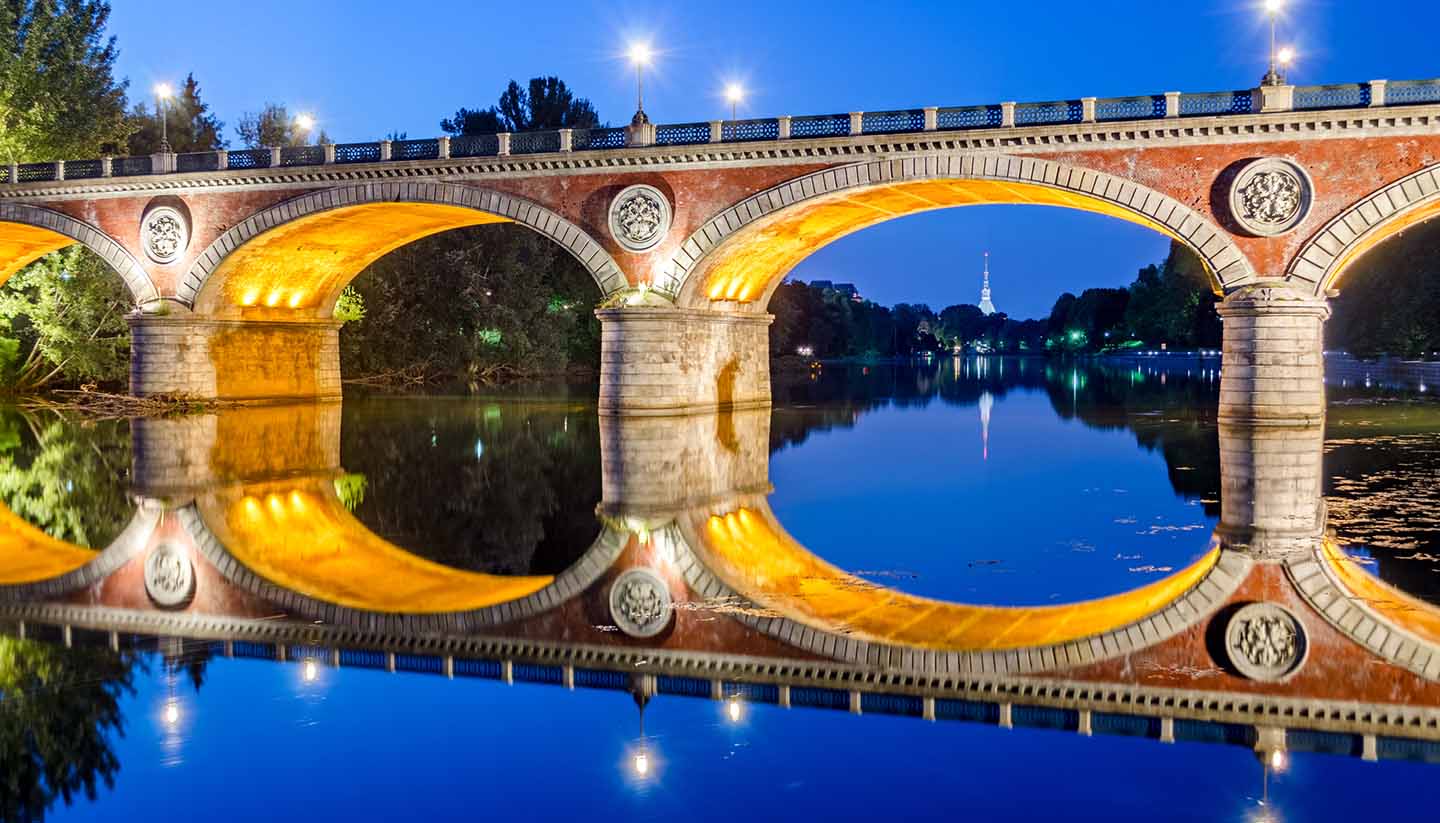Turin Travel Guide
About Turin
Situated on the mighty Po river in the far northwest of Italy, and surrounded by stunning alpine scenery, Turin offers visitors a feast of baroque architecture, ornate art nouveau cafés and museum collections covering everything from Egyptology to contemporary art.
Once little more than an industrial city, recent urban regeneration has transformed Turin into one of Italy’s more interesting outposts.
Start at its recently been renovated museums: the Museo Nazionale del Risorgimento Italiano, which looks at the establishment of the Italian state in 19th century, and Museo Nazionale dell’Automobile, celebrating the mighty car-production industry that once thrived here.
The symbol of Turin is the Mole Antonelliana, whose needle-like spire bursts unmistakably from the city skyline. Completed in the late 19th century, it today houses the Museo Nazionale del Cinema, but was originally conceived as a synagogue. There’s also one of the country’s most famous relics here, the Holy Shroud, said to be a section of the cloth that wrapped Christ's body after the crucifixion. It still attracts thousands of pilgrims.
Turin is also great for drinking – there are many café-bars in and around the city centre, so don’t forget to have a glass or two of Vermouth, which was born here. You’ll also find that Turin has a long history in chocolate and several old, traditional chocolatiers can still be found under the city’s handsome grey porticoes; be sure to scoff a few squares of Gianduja, the hazelnut chocolate created here under Napoleon.
As for savoury food, Piedmont’s cuisine is very different from the rest of the country, and some of the region’s best restaurants can be found in Turin. Rich sauces give way to light risottos, gamey meats and plenty of truffles. But as the Piedmontese were instrumental in unifying the country, don’t dare think of it as anything other than Italy.


